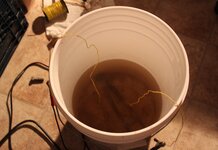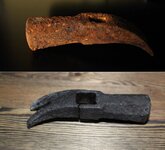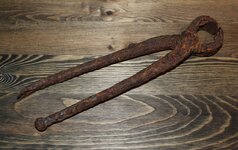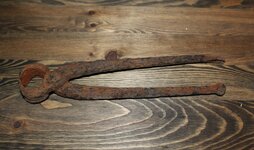WawaDuane
Sr. Member
- Oct 12, 2013
- 393
- 1,624
- 🏆 Honorable Mentions:
- 1
- Detector(s) used
- Garrett At Pro International
- Primary Interest:
- Metal Detecting
Been playing with electrolysis a little lately, in the safety of the man cave away from the prying eyes of the wife. I found that a gallon or so of water and about three tablespoons of baking soda seem to be the "magic recipe" in a plastic bucket.
I've been using a 12 volt battery charger and setting it on the 2 amp setting but I "super-bake" the artifact for an hour or so at 10 amps when I start. I've been using stainless steel bolts as the positive anode and of course the artifact is the negative. I have also used a stainless steel spoon as the sacrificial positive anode. I have read the danger of using stainless steel but it has worked fine so far for me. I simply use copper wire hooked up to the leads of the charger and I change them out every so often. I have also found that wrapping the artifact in the wire works a lot better than an alligator clip. I've been using marine spar varnish to coat the clean artifacts and that also seems to work pretty good.


These pliers are baking right now.

I've been using a 12 volt battery charger and setting it on the 2 amp setting but I "super-bake" the artifact for an hour or so at 10 amps when I start. I've been using stainless steel bolts as the positive anode and of course the artifact is the negative. I have also used a stainless steel spoon as the sacrificial positive anode. I have read the danger of using stainless steel but it has worked fine so far for me. I simply use copper wire hooked up to the leads of the charger and I change them out every so often. I have also found that wrapping the artifact in the wire works a lot better than an alligator clip. I've been using marine spar varnish to coat the clean artifacts and that also seems to work pretty good.


These pliers are baking right now.






